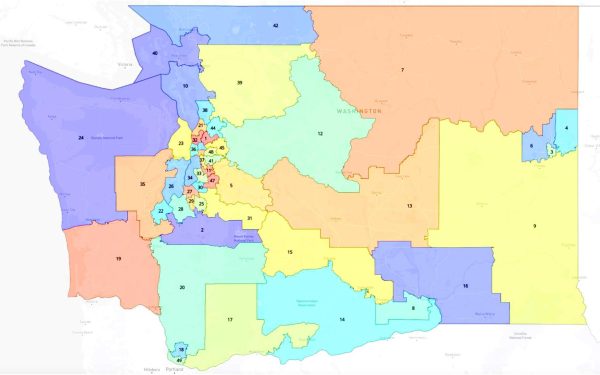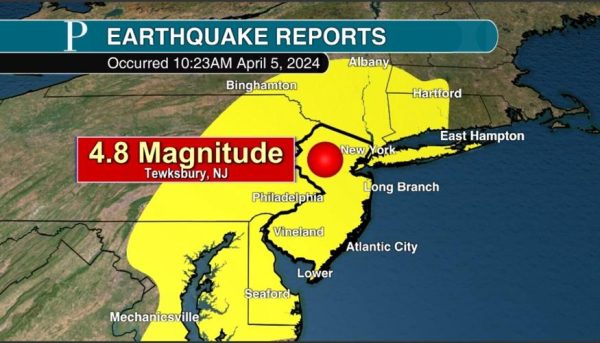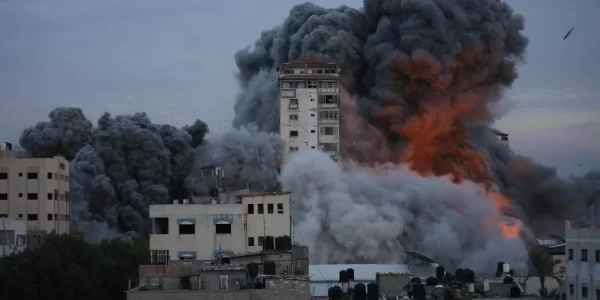The Trial of Kyle Rittenhouse

December 14, 2021
In August 2020, a teenager named Kyle Rittenhouse opened fire at a protest following the police brutality involving Jacob Blake. Two individuals were killed and one was wounded; Rittenhouse’s trial began earlier this month. After several days of deliberation, the jury acquitted Rittenhouse of all charges; a decision that has elicited mixed reactions across the country.
In court, Rittenhouse testified that on August 25, 2020 he drove from Antioch, Illinois, to Kenosha, Wisconsin and appeared in the middle of the Jacob Blake protest. On social media, there had been pleas for the protection of businesses exposed to the protest and Rittenhouse claimed that he showed up at the scene to answer those calls for help. He had a medical kit along with his rifle, as he walked around at the protest to prevent danger, he claimed. Julio Rosas, a witness at the scene, provided his perspective of what happened as a group surrounded Rittenhouse and violence was initiated at the protest. Rosas stated that he saw “two people jumped onto him and there was a struggle for control of his rifle. At that point during the struggle, he just began to fire multiple rounds, and that dispersed people near him.”
One of the main strategies used by the defendant was to institute a self-defense claim – arguing he only fired the weapon to protect himself and not to purposely cause bodily harm to others. Rittenhouse testified that “the other people he shot at as a part of a ‘mob’ chasing him, telling the court Huber came at him, struck him with a skateboard, and grabbed his gun. Rittenhouse shot him once in the chest, killing him. Finally, he said he saw Grosskreutz lunge at him and point a pistol at his head, so Rittenhouse shot him, he testified” (CNN). The defense also remarked that the prosecution’s claim that Rittenhouse sparked agitation among protestors was not valid due to the existing mindset with regard to firearm ownership in Wisconsin. Legal experts weighed in to argue that the presence of firearms “aren’t necessarily always equated with criminal activity” (CNN). During the trial, Rittenhouse faced several charges, including first-degree intentional homicide, first-degree reckless homicide, and two counts of recklessly endangering safety. He was found not guilty of all charges.
During this controversial trial, there were several instances in which Rittenhouse displayed extreme emotions and broke down in tears during his testimony. There were mixed feelings about RIttenhouse’s reactions.. Some felt he was remorseful for his fatal actions, while others saw the attention and pity he attempted to garner from his performance. The latter were especially angered when pre-trial photos came out of Kyle Rittenhouse at a bar in Wisconsin displaying potential support for white supremacy. A few weeks before the trial began, Rittenhouse wore a shirt reading “Free As (expletive)”, while he and the group he took pictures with flashed an “OK” sign. This gesture is commonly associated as a symbol of the Proud Boys, a white supremacist group. Legal documents from the trial also provide that the men at the bar sang “‘Proud of Your Boy,’ which prosecutors say was written for a Disney film but has become the anthem of the Proud Boys” (USA Today).
Currently, protests have been organized across the country, including NYC, as anger has built from the verdict of Rittenhouse’s trial. A debate has also risen, comparing the treatment of white and black defendants for the severity of their crimes. For example, while Rittenhouse was able to walk free after his protest shooting, Allen Russell was sentenced to life in prison for possessing about 1.5 ounces of marijuana. Kyle Rittenhouse’s case provides a clear example of how the American legal system can severely treat individuals in their political and societal beliefs, as the nation searches for the right answer.








